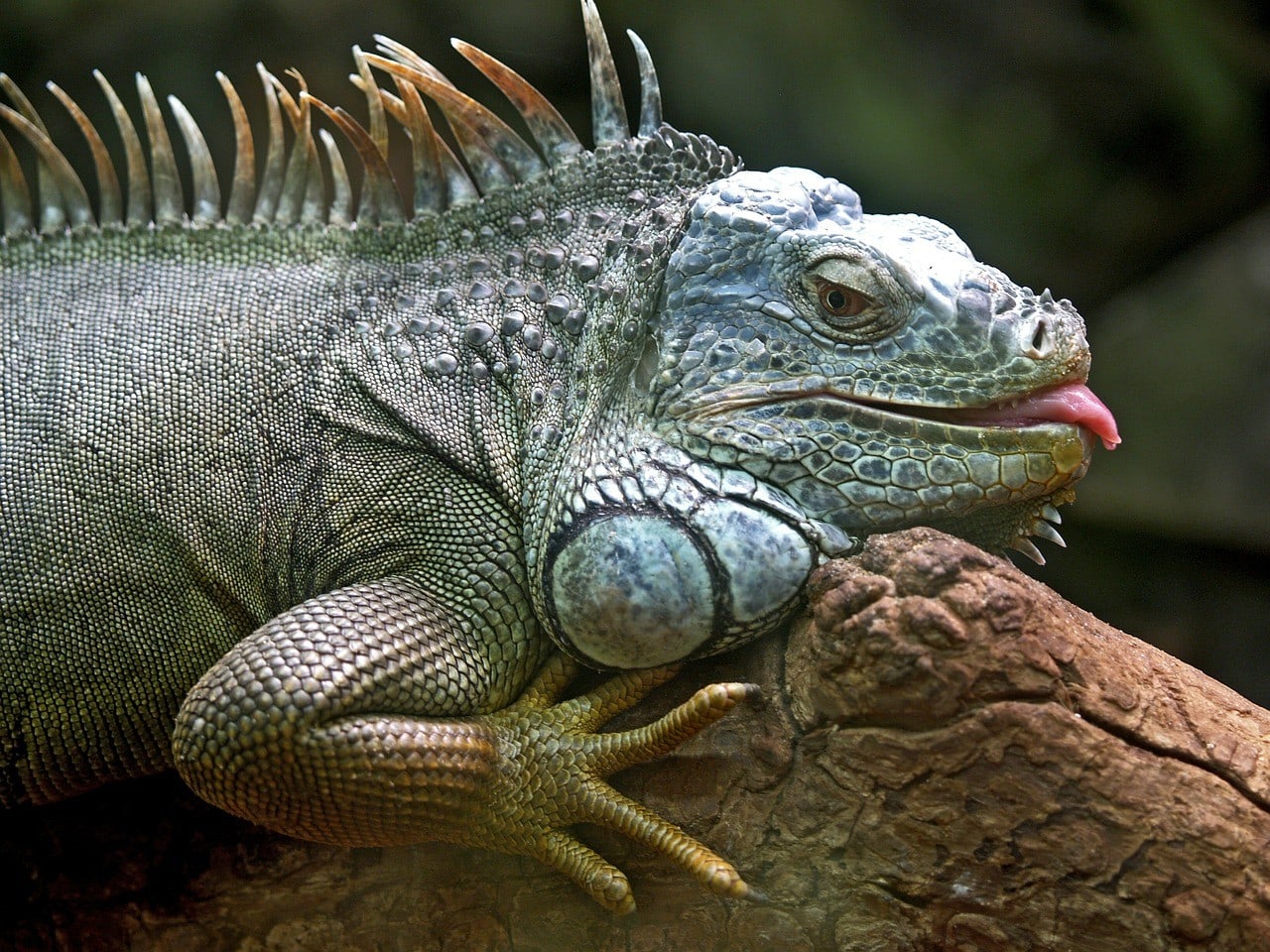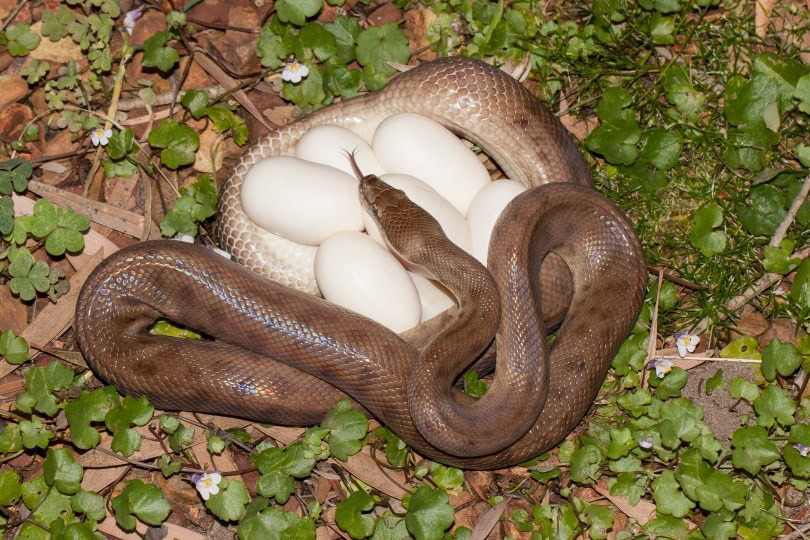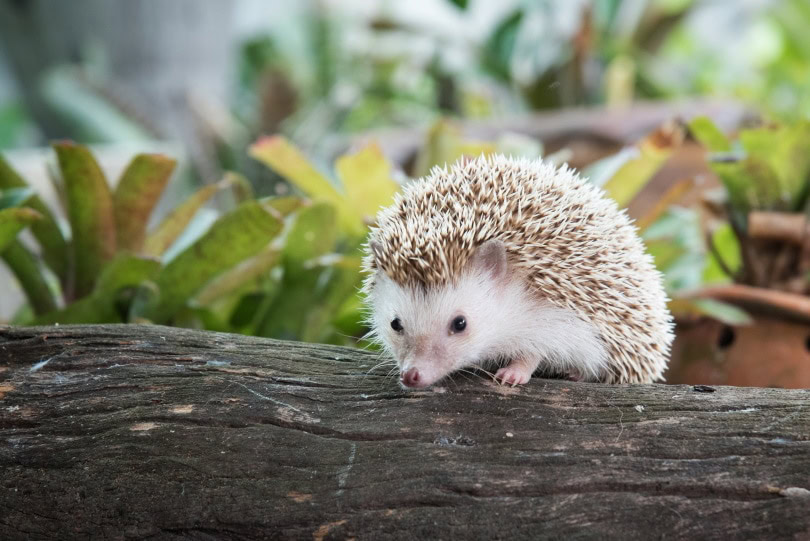Click Below to Skip Ahead
Iguanas are popular pets, and if you are considering purchasing one, it’s natural to wonder how big they will get. You will need to know the overall size to see if it’s right for your home and how big of a cage to buy. We’re going to help you answer this question and provide you with plenty of facts and information to help answer your questions and make your decision easier. Generally, Iguanas can grow up to 15–20 pounds of weight and 50–72 inches in length.

Facts About Iguanas
- Iguanas have excellent eyesight and can detect color shadows movement and objects from extremely far away.
- Iguanas use their eyes as communication tools.
- Iguanas have ears that are tympanum, which is similar to an eardrum.
- Iguanas give birth by laying eggs.
- Green iguanas are quite adaptable and listed in many areas as an invasive species.
- Antillia iguanas are a threatened species due to the decline of habitat.
Iguana Size and Growth Chart
Iguanas can take several years to reach full size. Most will achieve full size around 4 years, but some will continue to grow for up to 7 or 8 years. It will also grow at different speeds and start fast, but growth will slow considerably after 3–5 years of age. It might also stop growing for a few months before resuming. We recommend keeping a chart like the one we have here to keep track of your pet’s progress. The numbers presented here are for an average green iguana.
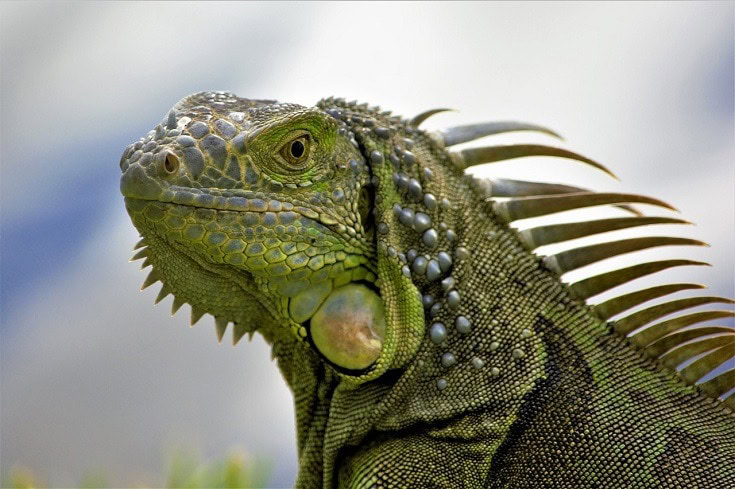
| Age | Weight | Body Length |
| Hatchling | < 1 pound | 6–9 inches |
| 6 months | 1–1.5 pounds | 20–27 inches |
| 1 year | 2–4 pounds | 28–36 pounds |
| 2 years | 4–6 pounds | 30–42 inches |
| 3 years | 5–8 pounds | 35–48 inches |
| 4 years | 10–15 pounds | 45–60 inches |
| 5 years | 14–18 pounds | 50–66 inches |
| 6+ years | 15–20 pounds | 60–72 inches |

When Do Iguanas Stop Growing?
Your iguana will usually stop growing around 4 years of age. However, it’s quite common for them to continue growing for up to 8 years total. It may also stop growing for several months, tricking you into believing it’s finished, only to start up again and continue for a year or more.
Does Cage Size Influence Iguana Growth?
Cage size does not directly affect growth. However, bad living conditions will. If your iguana is unhappy in the cage, the additional stress it creates will stunt your pet’s development. If the poor conditions persist for more than a year, it will permanently stunt growth, and your reptile will never reach its maximum size.
Cage Size
The best way to prevent stunted growth is to get a terrarium at least 1.5 times your iguana’s length, 1.5 times in height, and 1 times its width. Before your iguana is fully grown, a cage 36 inches long, 48 inches high, and 18 inches deep should be suitable to keep your pet happy, but you’ll need to buy a bigger cage as they grown. And the bigger the cage, the happier they’ll be.
UV-B Light
UV-B light emits a spectrum of light from 290–320 nanometers, which is essential to your iguana’s health. Without this light, your iguana will develop a deficiency in vitamin D3, leaving them susceptible to metabolic bone disease (MBD). This disease can make the bones of your iguana soft, leading to fractures.
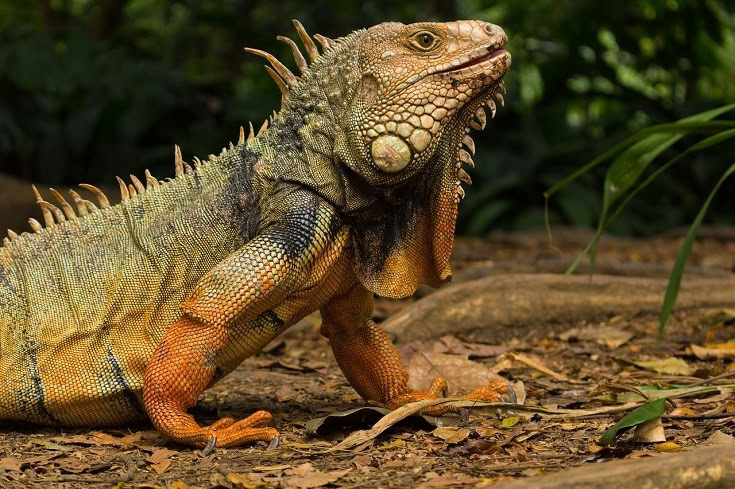

Ideal Iguana Diet for Optimal Growth
Your iguana will need plenty of calcium and vitamin D3. Many experts recommend sprinkling vitamin supplements over their food to make sure they get the required nutrients. However, you need to make sure not to provide too much vitamin A, or it can become toxic. Another nutrient found in many foods that can be harmful to your iguana is oxalates. Oxalates are in many greens, and they will combine with the calcium and prevent it from being absorbed by the iguana.
Good Foods for the Iguana
- Dandelion flowers and leaves
- Collard greens
- Mustard greens
- Squash
- Parsnips
- Apples
- Pears
- Watercress
- Carrots (not the top)
- Snap beans
- Hibiscus
- Alfalfa
Bad Foods for the Iguana
- Oranges
- Lemons
- Rhubarb
- Beetroot
- Leeks
- Insects
- Soybeans
- Spinach
- Celery
- Kiwi
- Figs

Conclusion
Iguanas can get fairly large if they are happy and well maintained. It can grow up to 5 feet long or even larger, so you will need a sizable enclosure, but that leaves plenty of room for customization. It will also like to spend plenty of time outside the cage and requires UB-V lighting for optimal health and growth. We recommend keeping a chart like the one we have above to track your pet’s progress. You can compare it to others, and it could let you know if your pet is unhappy if it falls too far behind. The reward for your efforts as an iguana can live up to 30 years.
We hope you have enjoyed reading over our guide and have learned some new information you can use. If we have helped convince you to give one of these amazing pets a try, please share this guide to how big your iguana can get on Facebook and Twitter.
Also See:
Featured Image Credit: edofs1, Pixabay
